
Problems are the essential ingredient for all stories. All forms of dramatic writing balance on the fulcrum of problems. The more problems, the better. Small problems, big problems, complicated problems, imagined problems, ignored problems all make the human heart beat faster.
Complication, quandaries, distress, doubt, obstacles and issues are all what make real life terrifying…and great stories captivating.
Face it, we humans are a morbid bunch. Most of us see flashing emergency lights on a slick highway, and what do we do? We slow down to see…while deep down desperately hoping we don’t see. We sit in a fancy restaurant and a woman throws a glass of red wine in her date’s face? Oh, we ALL pay attention.

Screeching tires, glass breaking or even a spouse on the phone muttering Uh-oh and our chest cinches. We must know what’s going on. Humans require resolution in order to return to our ‘happy’ homeostasis, even if deep down we know that ‘resolution’ is a lie. Delusion is inherently human, and so is neurosis which is good news for writers.
Can you say ‘job security’? *wink wink*
Humans Wired for Drama

If we take a moment to ponder people, it makes sense why problems make for excellent stories. First, all humans are wired for survival, thus any potential threat to survival makes us pay attention. We’re biologically designed to be egocentric. Thus survival is not a problem, it’s a given. It’s also why this conversation makes my left eye twitch:
Me: So what is your protagonist’s goal?
Writer: To survive.
Me: *face palm*
Survival is Not Story
Here’s the deal. We ALL have a goal to survive. If, at the end of the day, I am NOT DEAD? I consider that a pretty good day. My genetic desire to survive is why I don’t blow dry my hair in the shower, take up bear-baiting, or see how far I can drive backwards on a highway.
Survival isn’t interesting. Whatever threatens survival? That’s what’s interesting.
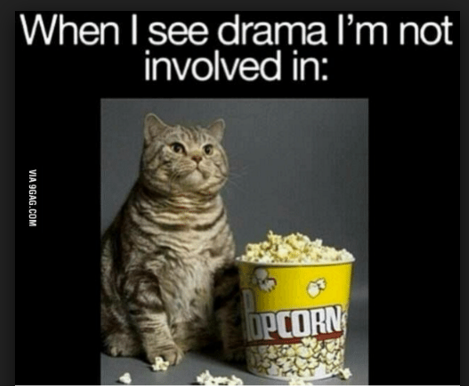
Secondly, humans possess a deep compunction to assign order in a world brimming with chaos. Remember our first lesson, when we discussed cause and effect? Our desire for order is directly related to survival. If we believe A + B = C, then when A +B =Z, we’ll drive ourselves nuts to know why.
What changed? Did we do, say, think something differently? Does this deviation mean anything? Is it dangerous?
Every superstition ever imagined hinges on human desperation for order and control.
We won the game when I didn’t wash my underwear and lost when I wore clean ones. Dirty underwear=winning.
Thirdly, humans are innately selfish. This proclivity for selfishness makes us all psychically vulnerable. For instance, we develop neuroses of varying degrees of severity. Neuroses, fundamentally, are false beliefs regarding cause and effect.
I smiled at the clerk and she was extremely rude. So it is true. People don’t like me.
Or, the clerk caught her boyfriend in bed her mother minutes before heading to work and—in truth—we (the neurotic customer) have nothing to do with her bad attitude. Aside from being in the blast radius of the poor clerk’s Jerry Springer drama.
Chaos Abounds

When we factor in that humans a) are wired to survive b) crave order and c) are innately selfish, it makes sense why we are a story species. Stories are what discharges that leftover psychic energy left over at the end of every day.
Life rarely makes perfect sense, but stories do. Reality has no set order, but stories do. Every day bad guys win, good people die, and ‘stuff’ happens for no apparent reason which freaks us out.
These are the main reasons why stories are the balm that eases our jagged thoughts and weary heart. In well-written stories, we might not like the outcome, but it makes sense. The play or movie might not set well, but there is integral order. In dramatic writing, even when the good guy loses, he still wins.
Life can’t say the same.
The point of any great dramatic writing isn’t some canned message or ‘good guy always wins’ soma, or even some thinly veiled morality tale/lecture/pontification. Drama—when boiled down to its essence—is to feed the innately illogical and selfish id what it desires.
Entertainment.
But not simply any entertainment. Entertainment that speaks to the primal realms of the mind and offers release. Enter in…PROBLEMS.
A Hero Must Decide

Ever pay attention to the word ‘decide?’ De-cide. What other words end in ‘cide?’ Homicide, fratricide, sororcide, matricide, herbicide, pesticide, and y’all get the gist. Cide implies killing. Something, someone must die.
When we look to story, this is the point of a solid core story problem, because death is the ultimate objective. I know, I know. Missed my calling writing inspirational greeting cards, but bear with me.
In our last lesson, we unpacked my created literary term Big Boss Troublemaker, which is the BRAIN behind the core story problem in need of resolution. Strong BBTs make for stories that endure because IDEAS are impossible to completely destroy.
Like weeds of the human condition, we might eradicate a problem in one story but then POOF! It pops up again in another. Over and over, again and again.

This is why there are no new stories, only new ways of telling the same stories. All human stories are about the same things: love, betrayal, greed, acceptance, etc. These are emotional touch-points that imbue story immortality.
Same but Different
This is why Shakespeare’s plays are as relevant today as they were a few hundred years ago. It’s precisely how Baz Luhrmann can take a story about two star-crossed lovers trapped between two feuding families and set it in modern-day Verona Beach…and our brains don’t explode.
We accept Leonardo DiCaprio and Claire Danes as Romeo and Juliet. We accept beach duels and gunfights, and John Leguizamo (Tybalt) spouting, ‘Peace? Peace. I hate the word, as I hate hell, all Montagues, and thee.’ We accept the Montagues and Capulets circa 1996 and oddly? We’re cool.
THIS makes perfect sense….

And this…
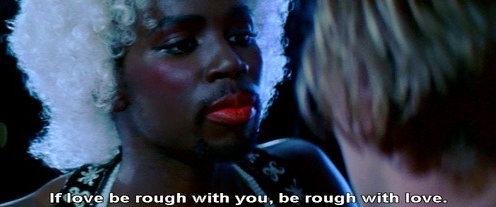
Not only does this make total sense, and speak to our souls…it is AWESOME. Romeo & Juliet is a play that is hundreds of years old, that tells a story we witness every single day. TODAY. We see these same dramas play out in our lives daily, whether in person, on-line or in the news.
The point of any story is the hero (heroine) has no choice but to de-CIDE. Ideas must die or victory is lost. Romeo and Juilet physically die in the end, but the IDEA that love can triumph over hate wins. Granted it’s a Pyhrric victory, but the IDEA that hate is more powerful—that might makes right—is ultimately defeated.
***It also proves Shakespeare’s sardonic point that romantic love leads to terminal stupidity, but that’s another post.
The Problem & Push

In any good story there are at least two IDEAS at war, meaning lots and lots of problems. There is the BBT’s (opposition’s) central idea, which will inevitably collide with the protagonist’s central idea.
As we discussed last lesson, ideas are relayed via the corporeal and this happens by proxy.
The proxy has a plan that forces the protagonist out of the comfort zone, and eventually gives the MC no choice but evolution or extinction. It’s do or die, whether that is a physical death, a psychic death, or both.
DEATH is always on the line. Whether we are writing comedy or tragedy, genre fiction or literary this maxim is universally true.
The MC must change internally (the IDEA) as well as externally (behavior), since talk is cheap. Action is what matters, because action is belief made manifest.
Problems at Play
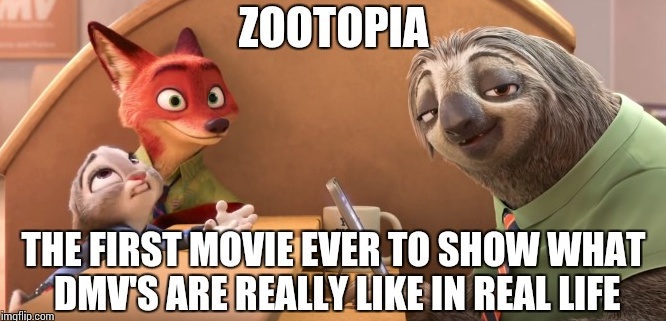
Let’s use an example. Today, we’ll look at Zootopia. Sure, it’s a kid’s movie but a fabulous example how we don’t have to be writing Hamlet, There Will Be Blood, or Glenngarry Glenn Ross to write terrific drama with depth.
Judy Hopps is a bunny who dreams of going off and being a cop in Zootopia, a place where all animals coexist in perfect harmony and are not prejudged based off species or history.
Sure.
Zootopia (like all utopian ideals) is vastly different from the pretty picture, as Judy soon finds out when she enters the police academy. Then she gets an even harder dose of reality as a rookie cop. It is true—Zootopia is a wonder for sure—but it also has its fair share of prejudice, stereotyping, and mistrust.
The BBT is the IDEA that prejudice is inevitable and dangerous and there is only one option—eat or be eaten. Our proxy of this IDEA is the seemingly meekest and most helpless of all creatures—a sheep (Bellwether)—who’s the ‘hapless/spineless’ assistant to Mayor Lionheart (a lion, of course).
Bellwether doesn’t believe prejudice can ever be overcome, that all creatures will eventually resort to their baser natures. As a sheep, her kind have always been prey. Unless she uses her wits, she and her kind will remain perpetually in danger, a permanent menu ‘option.’
Granted, it’s a manufactured danger (neurosis), since predator and prey animals have managed to coexist in Zootopia without anyone being eaten for generations. Yet, her argument is compelling because her belief is grounded in authentic fear.
It is Bellwether’s perceived inevitable reversal that compels her to force ‘fate’s’ hand. She cannot endure the stress that she (and other prey animals) could be the daily special any day. Thus, she takes action to ensure prey animals are in control. TOTAL control.
Great Antagonists Actually Make a Good Point
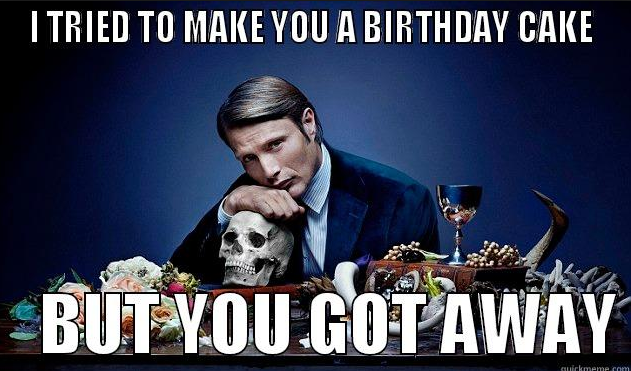
This is what separates deep, layered antagonists (and villains) from caricatures. When we open our minds and think from the opposition’s POV, they kinda make a good point…which is what messes with our heads.
***FYI—Id, being primal and freaky, totally digs mind games and is still unsure if Dr. Hannibal Lecter is a villain or anti-hero. Sure he eats people, but only the ones who kinda deserved it.
Moving on…
Bellwether devises a scheme to ‘prove’ predator animals cannot be trusted, and thus must be contained for obvious public safety reasons. By inflaming deeply held, but politely hidden, beliefs among the animals, she will have all the justification needed to oppress those considered a threat (predators).
In the beginning, Judy Hopps naively believes she’s devoid of prejudice, completely enlightened, and without fear. Predators are not a threat. They don’t view her and her kind as food, but as fellow citizens and friends. All that being hunted and eaten stuff is ancient history.
This is Judy’s IDEA and it cannot help but collide with Bellwether’s IDEA that prejudice is inevitable and dangerous.
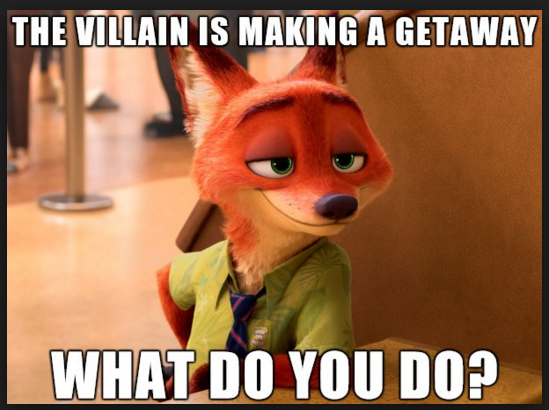
Desperation forces Judy to ally with a fox (historically known for enjoying rabbits as munchies) in order to solve the mystery. Predator animals really are going berserk, seemingly reverting back to their wild natures. Why?
Strong Protagonists Face Personal Extinction
Deep down, Judy believes the animals of Zootopia have evolved and can coexist (though is now facing escalating doubts). Problems bash Judy’s IDEA repeatedly, harder and harder.
A psychic sledgehammer slams into her beliefs, testing their actual strength. No matter what she does or tries, the evidence mounts that she’s delusional.
Everything she sees and experiences only seems to affirm predators are dangerous, cannot be trusted, and must be contained.
The core story PROBLEM—Why are all the predators suddenly going berserk?—gives Judy only two choices. She can give up or be brave and to take a hard honest look at herself.
Is she really as devoid of prejudice as she once believed? Really all that evolved, all that enlightened after all? Or deep down does she actually agree with Bellwether?

In the beginning, Judy believed Zootopia was perfect, but by the end of Act 2? Judy doesn’t even know why she’s THERE. All her psychic wounds are open and bleeding.
Eventually the story problem forces Judy to de-CIDE. One idea must die. Either Zootopia dies or the notion that prejudice is inevitable and dangerous must die.
For that to happen, Judy Hopps must expose Bellwether’s true colors and stop her nefarious plan, or Zootopia implodes. The old ways return only the roles reversed (prey in control) and all progress goes up in flames.
À La Fin
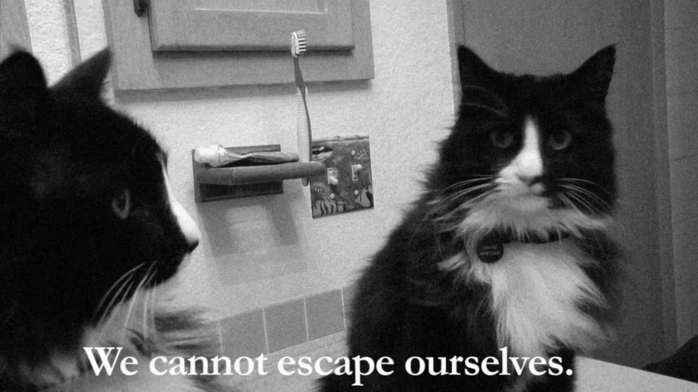
Both sides, antagonist and protagonist have their own unique IDEA. The story is the crucible that fires out the BS, and reveals truth. Problems batter both sides until one side finally wins. Just as a suggestion, in commercial fiction, it’s a sound plan for the protagonist (hero/heroine) to win. Otherwise it’s called a French film 😛 .
La mort est inévitable. Pourquoi se battre? Boire du vin.
For anyone who longs to accelerate their plot skills, I recommend my On Demand Plot Boss: Writing Novels Readers Want to BUY. Two hours of intensive plot training from MOI…delivered right to your computer to watch as much as you like 😀 .
Or to make stabbing motions at my head with a pen. Die! Die! Kristen we loves you but hates you!
I also am offering my Bullies and Baddies: Understanding the Antagonist on March 15th (7-9 EST) recording included with purchase if you can’t make it. This class is for in-depth training on how to balance all types of antagonists for maximum impact.
What Are Your Thoughts?
I do love hearing from you. Where you struggle, because we ALL do. What you want to know more about? Where you get stuck, etc.
I look forward to helping you guys become stronger at your craft. What are some of your biggest problems, hurdles or misunderstandings about plot? Where do you most commonly get stuck?
I love hearing from you!
And am not above bribery!
What do you WIN? For the month of FEBRUARY, for everyone who leaves a comment, I will put your name in a hat. If you comment and link back to my blog on your blog, you get your name in the hat twice. What do you win? The unvarnished truth from yours truly. I will pick a winner once a month and it will be a critique of the first 20 pages of your novel, or your query letter, or your synopsis (5 pages or less).
By the way, yes I also offer classes, and so does my partner-in-crime USA Today Best-Selling Author Cait Reynolds does, too. We both want y’all to write amazing books because that means more word of mouth sales, and a world with better books.
Alas, we still should learn the business of our business so I hope y’all will check out the classes below.
NEW CLASSES (AND SOME OLD FAVES)!
GASKETS & GAITERS: HOW TO CREATE A COMPELLING STEAMPUNK WORLD
Instructor: Cait Reynolds
Price: $65 USD Standard
Where: W.A.N.A. Digital Classroom
When: FRIDAY February 23, 2018. 7:00 PM E.S.T. to 9:00 P.M. EST
Who doesn’t love some steampunk cosplay? Corsets, goggles, awesome hats…
Steampunk has become one of the hottest genres today, crossing the lines of YA, NA, and adult fiction. It seems like it’s fun to write because it’s fun to read.
However, there’s a world of difference between the amateur steampunk writer and the professional steampunk author, and the difference lies in the world they create.
Is your steampunk world historically-accurate enough not to jar the reader out of the narrative with anachronisms?
Does your world include paranormal as well as steampunk?
Are the gadgets and level of sophistication in keeping with the technologies available at the time?
Steampunk is not an excuse to take short-cuts with history. Good writing in this genre requires a solid grasp of Victorian culture and history, including the history of science, medicine, and industry.
This shouldn’t scare you off from writing steampunk, but it should encourage you to take this class and learn how to create a world that is accurate, consistent and immersive.
This class will cover a broad range of topics including:
- Polite Society: Just how prim and Victorian do you want to get?
- Science, Technology, Medicine, and Industry: How to research these without dying of boredom?
- Creating the Blend: How to drop in historical details without info-dumping, and how to describe and explain your steampunk innovations without confusing.
GET READY TO ROAR: THE BUSINESS OF THE WRITING BUSINESS
Instructor: Kristen Lamb
Price: $55.00 USD
Where: W.A.N.A. Digital Classroom
When: Thursday, March 1st, 2018, 7:00-9:00 p.m. EST
Being a professional author entails much more than simply writing books. Many emerging authors believe all we need is a completed novel and an agent/readers will come.
There’s a lot more that goes into the writing business…but not nearly as much as some might want us to believe. There’s a fine balance between being educated about business and killing ourselves with so much we do everything but WRITE MORE BOOKS.
This class is to prepare you for the reality of Digital Age Publishing and help you build a foundation that can withstand major upheavals. Beyond the ‘final draft’ what then? What should we be doing while writing the novel?
We are in the Wilderness of Publishing and predators abound. Knowledge is power. We don’t get what we work for, we get what we negotiate. This is to prepare you for success, to help you understand a gamble from a grift a deal from a dud. We will discuss:
- The Product
- Agents/Editors
- Types of Publishing
- Platform and Brand
- Marketing and Promotion
- Making Money
- Where Writers REALLY Need to Focus

AMATEUR HOUR IS OVER: SELF-PUBLISHING FOR PROFESSIONALS
Instructor: Cait Reynolds
Price: $99.00 USD
Where: W.A.N.A. Digital Classroom
When: Friday, March 2nd, 2018, 7:00-10:00 p.m. EST
Let’s get down to brass tacks. Are you going to go KDP Select or wide distribution with Smashwords as a distributor? Are you going to use the KDP/CreateSpace ISBN’s or purchase your own package? What BISAC codes have you chosen? What keywords are you going to use to get into your target categories? Who’s your competition, and how are you positioned against them?
Okay, hold on. Breathe. Slow down. I didn’t mean to induce a panic attack. I’m actually here to help.
Beyond just uploading a book to Amazon, there are a lot of tricks of the trade that can help us build our brand, keep our books on the algorithmic radar, and find the readers who will go the distance with us. If getting our books up on Amazon and CreateSpace is ‘Self-Publishing 101,’ then this class is the ‘Self-Publishing senior seminar’ that will help you turn your books into a business and your writing into a long-term career.
Topics include:
- Competitive research (because publishing is about as friendly as the Red Wedding in Game of Thrones)
- Distribution decisions (because there’s actually a choice!)
- Copyright, ISBN’s, intellectual property, and what it actually all means for writers
- Algorithm magic: keywords, BISAC codes, and meta descriptions made easy
- Finding the reader (beyond trusting Amazon to deliver them)
- Demystifying the USA Today and NYT bestselling author titles
- How to run yourself like a business even when you hate business and can’t math (I can’t math either, so it’s cool)
Yes, this is going to be a 3-hour class because there is SO much to cover…but, like L’Oréal says, you’re worth it! Also, a recording of this class is also included with purchase.
The class includes a workbook that will guide you through everything we talk about from how to do competitive research to tracking ISBNs and distribution, and much, much more!
Time is MONEY, and your time is valuable so this will help you make every moment count…so you can go back to writing GREAT BOOKS.
EVEN MORE CLASSES…
Check them out at W.A.N.A. Int’l.
- Thursday, March 8, 2018. 7-9 p.m. EST. $45.00 USD.
- Friday, March 9, 2018. 7-9 p.m. EST. $65.00 USD.
- Thursday, March 15, 2018. 7-9 p.m. EST. $50.00 USD.
- Friday, March 16, 2018. 7-9 p.m. EST. $50.00 USD














15 comments
7 pings
Skip to comment form
Thank you for that, Kristen. Beautifully explained.
Hi Kristen,
How much do you charge to edit a book with a critique about where I need to improve my story?
Author
I am about to run my Write Stuff special and that is a great place to start. Most economical. I generally can tell all your bad and good habits in twenty pages and sense if there is a solid plot. This saves time and a lot of money if we need to repair your structure. Also there is Plot Boss On Demand and the upgrade that comes with personal consulting on your novel with me, which is another option.
Hi Kristen. Hold on a ‘sec, I need to finish climbing to the top of Sandia Peak so I can look east, see Texas and … wave. There.
Over the years, I’ve read many how-to-write-a-book books. Bell, Swain, Fields, Cleaver, Brooks. And many more. And I’ve studied movies, books and T.V. until I’m blue in the face. Netflix’s success – yeah, that was me. Seriously.
And still, I know my fiction is missing something. Then I read your recent posts. Then I went back and read your older crafting posts. Which was like finding gold in Tyler because I always though you were Facebook Girl. (And Tyler was just an oil town.) Turns out you’re Writing Woman, too. The way you approach all this is the same, but different. I just have that feeling that I have finally chambered a round. It really culminated when I watched the entire Ian Mckellan version of MacBeth. And all of TOS (again.) And a three hour interview of D.C. Fontana. I saw something … different. All because of you.
I wish you’d write one of those how-to-write-a-book books. You’re good at explaining this stuff and come in more from the psychological angle in a way that explains things others seem to think are obvious. Lots of, “Oh, that’s what they’re talking about” moments.
It’s inspired me to come up with a new story idea, too. “Seeing Texas”. It’s about a man who lives in a New Mexico cult where everybody is dying because their brains are shrinking from lack of good books to read. Their last hope is for him to find the Princess of the Secret Sauce, who lives in the mythical land of the East People. (Legend has it they used to come to town to ski and left behind a copy of something by Michener.) Many have died trying to find I-40, the lost passage to the East People. Because, unknown to the people and our Hero, Hat Man has made sure nobody ever finds it. Those intrepid souls who dared try find the passage now lie dead at the hands of his own henchmen, sworn to forever seal the path to the Princess. For he hath writ his own series of books and will soon release them upon the people, enshrining his power for ever and ever – the great wisdom of the Princess forever lost…
Author
ROFL. I-40 IS a beast. Actually I am planning on writing a craft book. I’d shelved the notion because to me it seemed the market was just bulging with 101 material. Not that this is bad at all Written plenty of ‘pink weight’ writing workouts myself. I just wanted more, to take to a higher level. Because you’re right. When I was new teachers tossed around ‘antagonist’ and I was too embarrassed to admit I had no clue WTH they were talking about.
Or I would get a glimmer, then start writing believing I understood and *melting*. So my goal is to write the book you seek. Title suggestions? 😀
Good deal! I would humbly encourage you not to do a 101 book. There are too many of those, and they all repeat what has already been said, many of them not very well. Your strong suit is character. What you bring to the table is a really good description of the dynamics of character as a moving part rather than a just a component. For me, that’s the most valuable paradigm grind you are giving us. Character in motion, if you will. (Hey,there’s a title.) You talk about character in the context of story very well, which is something I think is generally missing in a lot of other books. Sure, they all talk about plot structure and arc and how the character is supposed to go through that process. But the actual mechanics of that process is, oddly enough, kind of glossed over. “You know, conflict.” No, I don’t know.
Another thing that’s bantered about as a passing remark: subplot. Huh? I’ve started to figure it out by specifically studying B and C lines, and it is not a simple thing. Subplot is where the intimate drama happens. Macbeth must be King. Yawn. MacBeth must kill to satisfy his power-hungry wife. Ah – drama. That’s the sort of thing you have helped me understand, where others have failed. It’s really helped me see, very clearly, some big problems with my work so far.
Yes! What Michael said!! Since the BBT post, where FINALLY, someone wrote about the more advanced aspects of writing craft — and not the rules, but how people think, why they want books, why they crave stories, how those stories need to touch certain beliefs, etc. I know how difficult and intense that article was, but you need to embrace that you have a gift — we understand you!! You put on the tanks and swim down into things until we all can say: “Ooooh, yeahhhh…”
Consider this my pre-order…
“How to put the Bad in Badass” :O))
Very insightful and funny, Kirsten. I would like to know more about how to build a following. Thanks. Love your writing acumen.
Being fond of the meanings behind things, I am deeply confused by Bellwether being female. Because a bellwether is a male sheep who, er, has had his interest in lady sheep surgically removed, shall we say?
That aside, I like your point about -cides and death being the ultimate objective. As the Player King says, “I can do you blood and love without the rhetoric, or blood and rhetoric without the love, or all three concurrent or consecutive, but I can’t do you love and rhetoric without the blood. The blood’s compulsory – they’re all blood, you see.” (Gosh, I wish I could write like Stoppard!)
Now I gotta go stack firewood and think about how a magical curse works…
Hi, Kristen. I just discovered your blog by following a link on Twitter, and I’m glad I did. Please enter my name in your drawing. More important, please keep up the good work of helping writers get their real story on the page in a way that grabs the reader and lives on. Thank you!
Excellent post, Kristen. Thank you!
I’ve never seen Zootopia, but I have taught Women’s Studies. What happens when you replace the word “prey” in your post with “female” and “predator” with “male?”
It sounds like gender politics to me, not to mention #metoo.
Author
Interesting point, and usually I avoid this sort of debate, but if we are going there, I would say that this dynamic has never been part of my experience. Sure, sometimes men were predatory, but they were NOT the majority by any stretch of the imagination.
Who I feared? FEMALES.
Most of the trouble (predation) I’ve faced (and have witnessed) was largely committed by females. Thus, I’m unsure why males get the sole bad rap as ‘predator.’
For me, every bully ever from grade school through college were females. Females who stole from me, made me the center of taunting and shunning, made fun of my clothes (hand-me-downs or K Mart), tossed my belongings in the trash during gym, and who took great joy tormenting me because I wasn’t part of the group.
Two major instances still haunt me.
ONE: When I was in high school, the person I feared most? A female teacher (the debate/forensics teacher/coach) and her group of blood-thirsty harpies (the forensics team, which was competitive acting—all females). This teacher resented having to also deal with the debate team, so we learned to stay out of her way.
This teacher and her cronies were cruel to anyone not in their clique and had no problem targeting males. One time, we were on a trip for a competition. I strayed into the auditorium and saw this teacher and her gaggle of popular girls all huddled together. They were giggling in a way that made me not trust what was going on, but I had to leave because my next round (debate) was coming up.
I had seen them being really friendly to this geeky kid who was the kind who tried way too hard, desperate for a friend. Skinny, pale, and likely today we’d recognize him as being somewhere on the Asperger spectrum. I liked him, namely because I was also an outcast. He was odd but very sweet and extremely helpful (like helping me carry my 50 pounds of evidence files).
But these girls talking to him? Something was up. And nothing good.
I went to my debate and when I finished my round, I noticed these harpies were AGAIN being super friendly to him (this was after I had witnessed them huddled giggling in auditorium).
Days later I found out what this teacher and girls were up to. They’d pretended to be his friend and gave him a chocolate brownie (a chocolate Zinger) that they’d crammed full of chocolate Ex-Lax…knowing he was going to be on a three-hour trip back to his hometown, trapped on a bus with all his peers.
Let’s say, he didn’t make it home before all that Ex-Lax hit. How he didn’t end up dead or in the hospital is beyond me.
I spoke out against what this teacher and her groupies had done and instead of getting the A I earned, this teacher arbitrarily changed my grade to a C (almost an F). The school administration were all her gal pals and instead of help, I got the veiled threat. Take the C or it would only be bad for me.
If this nonsense happened today, that teacher would have been fired, if not put in jail. Her little minions would have been expelled, the lot of them possibly charged with a crime. I had nightmares about that teacher until my mid-thirties.
The teachers who made my life hell on Earth? Women. Every one of them. College professors who made my life and the lives of other females a misery? Women.
TWO: I had a speech prof who assigned a 10 minute speech as our final and it counted for almost all of our grade. If we failed the final, we failed the class.
On my way into the building, I saw one of my classmates (Cheryl) who was an older woman who I liked and admired because she was gutsy enough to so back to college even though she was her 50s. Anyway, Cheryl was curled up in a corner bawling into her knees. Inconsolable.
Me being me (crusader at heart), I stopped to help. Cheryl was extremely ill with the flu. Shouldn’t have been driving, let alone at the college. She was raging with fever and had NO voice (a whispery squeak). She’d showed up so the Prof could see she really was ill (not a lame doctor’s note), to ask this professor to reschedule her speech time. That Prof gave her an F because she didn’t deliver her speech.
It was ME, a 19 year-old girl who took this 53 year-old woman to the dean’s office and, being the pit bull I am, fought for her to get to reschedule her final and the Prof to be reprimanded. But if I hadn’t happened to show at just the RIGHT time? She would have been failed…by another woman.
In my degree, Women’s Studies were required, and do see certain truths (I.e. aging and invisibility, double-standards, etc.). But women would be wise to take a long hard look in the mirror. True, men do their fair share of harm, but women are no angels. Men are predators, sure. But females? Gender alone doesn’t dictate horns or halos. There might be a lot fewer #metoo if girls/women knew they could trust other women to help. If women protected each other.
Kristen, Thank you for your thoughtful reply. I am so sorry you had those experiences, and hope you have found more supportive and collaborative experiences with women since that time. Thanks to other women, we mystery writers are so grateful to have Sisters in Crime. Your conclusion reminded me about this research by primatologists I thought you might enjoy knowing about: https://www.scientificamerican.com/article/bonobo-sex-and-society-2006-06/
take care
Author
I’ve had plenty of good experiences with women (most after I reached a certain age and had more confidence). Many have supported me in any number of ways like with my writing or blogging. I just feel the world isn’t black and white. Gender doesn’t determine predator or prey, rather who the person is. Plenty of men have been supportive and helpful just as plenty of women have been cruel. Humans are vastly complex, which is good for us writers or stories would be pretty dull 🙂 . Thanks for the link. Will check it out.
[…] https://authorkristenlamb.com/2018/02/dramaticwritingandproblems/ “Problems are the essential ingredient for all All forms of dramatic writing balance on the fulcrum of problems. The more problems, the better. Small problems, big problems, complicated problems, imagined problems, ignored problems all make the human heart beat faster.” […]
[…] I write stories in which characters literally die, but even the most peaceful domestic tale is about life and death. It may be the death of an important relationship, of a dearly-held belief, of one’s own sense of self, but death must be on the line. Kristen Lamb expressed it this way in her recent blog post: […]
[…] Lamb says great dramatic writing draws blood and opens psychic wounds, Janice Hardy shows how over-explaining will kill your novel, and Michael Gallant shows how to […]
[…] Problems: Great Dramatic Writing Draws Blood & Opens Psychic Wounds […]
[…] Problems: Great Dramatic Writing Draws Blood & Opens Psychic Wounds […]
[…] Problems: Great Dramatic Writing Draws Blood & Opens Psychic Wounds […]
[…] without triumphingover a big problem, despite all we (as Author God) will throw at them. Once we know the problem, it’s far easier to have a sense of the ending.” I usually know the end though sometimes it […]